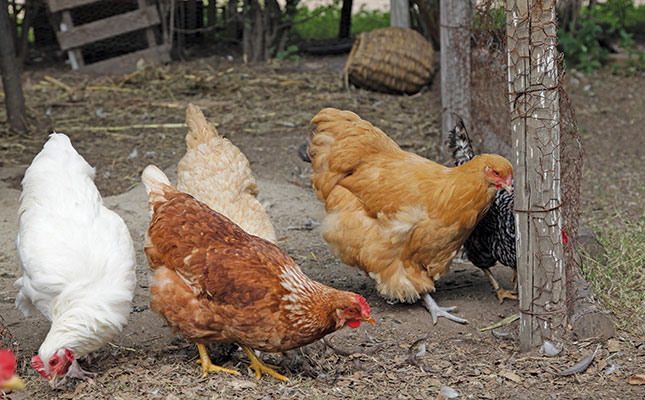
Many communal farmers I work with do not realise the commercial value of their farmyard chickens; families generally keep these birds merely for subsistence purposes.
The same applies to smallholder farmers who believe that the only way to run a viable chicken farming enterprise is to farm the traditional white broiler chickens that depend solely on purchased bagged feed.
Not only has chicken grower and finisher meal become very expensive, but free-range chickens are healthier, and the meat and eggs produced are comparatively healthier for human consumption.
The fact that free-range chickens may take longer than five to six weeks to be ready for market is of no consequence if you can produce your own cheap feed.
I’ve also noticed that there is a growing market for live indigenous or Nguni-type birds rather than white broilers. Marketing of live chickens is easier than transporting livestock such as sheep and cattle.
An added bonus of farming chickens is that they increase in number faster than other livestock. Free-range hens can be prolific breeders, and flocks numbering 10 or even far more are not uncommon.
Simple, affordable housing for young chicks
One problem of raising free-range chickens is that young chicks can be taken by predators such as hawks or vermin such as rats.
A ‘nursery’, however, can be constructed for very young chicks from cheap materials such as chicken wire mesh, 2,4m-long wooden droppers (used in constructing game farm fences and available at most farmer supply stores), cheap timber slats (available at most sawmills or hardware shops) and the reinforcing mesh used in the foundations of buildings (available at building material supply companies).
Here is how to build such a structure:
- Cut the 6m metal reinforcing mesh sheets in half lengthways; this gives a fence height of 1,2m (as the sheets are 2,4m wide) and a 12m-length of mesh to build an enclosure. Add more mesh sheets if you need to increase the size of the enclosure. The reinforcing mesh offers support to the structure at ground level and prevents predators from biting through.
- Sink the droppers 600mm into the ground. This will ensure that you have secure, 1,8m-high supports.
- Attach the timber slats to the droppers to build a frame, and secure the chicken mesh tightly against the steel reinforcing mesh and timber frame.
The droppers and slats can be treated with an oil-based product such as Waksol timber sealer (my preferred product, as it does not have a strong smell), linseed oil or creosote (all available from hardware stores). Alternatively, paint all timber and droppers with three coats of old motor oil annually at the start of summer.
I do this even if the timber slats and droppers are treated, as it protects the wood against the elements. Paint the reinforcing mesh with a rust protection paint (at most hardware stores).
Shelters
The enclosures can be fitted with simple individual shelters made from corrugated zinc. Under each, place an old car tyre filled with grass cuttings or oats straw. The hens, which forage throughout the day with the breeding roosters, can lay eggs in these enclosures.
Create openings in the fence to enable them to leave the enclosure to forage in the surrounding garden area or farmyard, and then return to the eggs.
These exit spaces should be roughly square in shape, about the size of two shoebox lids, and 10cm to 15cm off the ground. This prevents very young chicks from exiting the nursery enclosure.
When mother hens are out foraging, a little grower mash and even finely chopped greens such as lucerne can be fed to the chicks. This will continue for about a week at the most; after this, the chicks will join the adults in foraging.
Shane Brody is involved in project management as part of an outreach programme aimed at transferring skills to communal farmers in parts of the former Ciskei and Transkei.













